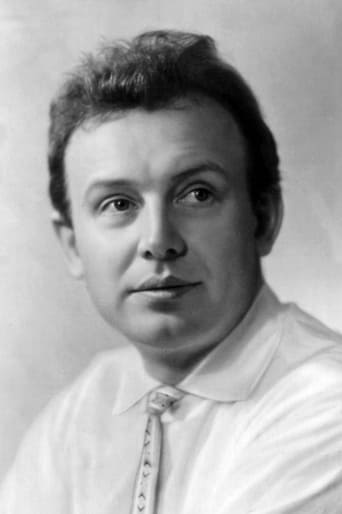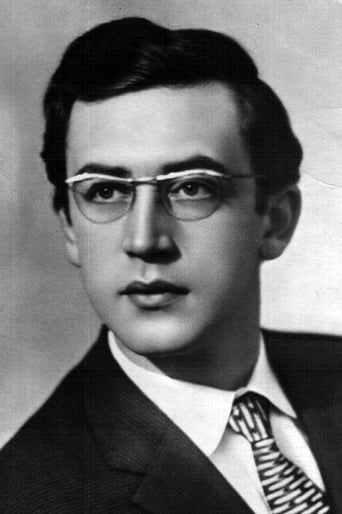ThiefHott
Too much of everything
Solemplex
To me, this movie is perfection.
Evengyny
Thanks for the memories!
AniInterview
Sorry, this movie sucks
punishmentpark
Somebody (elsewhere on the net) pointed out that a forest fire makes so much noise that anyone would be woken up by it, and that must be true. Also, a fire, as big as it is here, would have to be a miraculous one if it would exactly spare a few tents and a small path through to the forest, wouldn't it?The characters themselves don't appear too credible to me, either. They are a bunch of tough but jolly Soviet workers, searching for great riches for their wonderful (communist) state. I read a review here on IMDb, explaining their state of mind, but, as sincere as the intentions (of the characters) may be, it didn't catch on with me. The acting is also a bit over the top here and there, as could be expected, though the actors are not completely unsympathetic.Then, finally, there's the amazing and beautiful cinematography of an expedition that starts out hopeful, but changes overnight into a nightmare (although the many shots of a campfire fading in and out was a fair omen). It makes the shortcomings of the film very well worth enduring.A good 7 out of 10 seems a fair compromise.
zetes
Mikhail Kalatazov is best known for 1957's The Cranes Are Flying and 1964's I Am Cuba. This is the film he made between those. It also contains cinematography by Sergei Urusevsky. That's its best aspect, for sure, and much like those other two films, it's a gorgeous piece of pure cinema. The story concerns four geologists (including The Cranes Are Flying's lead actress, Tatyana Samoilova) who have been dropped off in remote Siberia to search for diamonds. The initial plot concerns a love triangle between Samoilova and two of the men (while the third man writes the titular letter to his wife). Soon the melodramatic plot line falls to the wayside when the four are trapped in an enormous forest fire. It then becomes a desperate tale of survival. It's actually quite gripping, and the photography is so utterly stunning you can't help but be awestruck.
oOgiandujaOo_and_Eddy_Merckx
The naming of the film as The Unsent Letter seems a little bit mystifying, in that it suggests that the whole film is about the letter, whereas that's something of an under-developed tangent.The story concerns four Soviet geologists, prospecting for diamonds in remote Siberia. Gentle and committed Marxist-Leninist folk, they are all in love, Tanya and Andrey with each other, Sabinine with the wife he left behind (Vera), and Sergey is left with the thorns of the rose, in unrequited love with Tanya (oh no!). The idea of the expedition is that a source of domestic sparklers will lead to the betterment of the Union of Soviet Socialist Republics, perhaps even a new industrial revolution, releasing them from a reliance on foreign capitalists.The popular wisdom of today (social Darwinism) has it that communism failed because humans are essentially selfish, human nature is competitive, families are nepotistic. Ideas about human nature being essentially negative were around before the establishment and subsequent collapse of any nations along principles looking something like Karl Marx's. The classic counterargument was made by Prince Kropotkin, (who himself led geological expeditions in Siberia) suggesting that human competitive behaviour was actually a marginal characteristic that capitalism had harnessed and brought front and centre, in aid of which he cited various anthropological cases, which pointed to the pre-eminence of the spirit of co-operation over the spirit of competition. Why the history lesson? Well the folks in the movie were living under a different ideology, it was a hopeful ideology, where the spirit of co-operation was seen as an ideal. There were a class of people, represented in this film, who genuinely thrived under Marxist-Leninism (I do not deny the existence of nasties such as Joe Stalin and Beria and their havoc and undermining of Marxist-Leninist principles). It's critical that the way the characters think is understood, and is seen as realistic, for the film to sink in on any other than an aesthetic level (it is one of the most gorgeous movies ever made).Kalatosov was a hardcore ideologue, an earlier film of his, Nail In The Boot, is hysterically Stalinist / Robespierre-ian. He's toned that down here, although he clearly sees the state as some sort of greater, potentially immortal entity in comparison to the individual. He really did feel that people could pull together in the same direction, for something bigger than themselves, it's simply not just propaganda for him to represent the many people who felt like that. The reluctance to buy foreign diamonds is interesting because it's only superficially xenophobic, it's not like say, Americans not wanting to buy a foreign car. The Soviets believed that capitalist modes of production and wealth sharing were immoral, so buying South African diamonds was something inherently immoral for them, rather than about protectionism.On a personal level I found Sergei Stepanovich's story very moving to me, I can't think where I've seen a character like this before. He's in love with someone who's already in a love story, he's jealous, but not ashamed about it. He's never felt that he loves anyone before and he's getting past the age where love stories typically happen, but he's too honourable to do anything dastardly about it to anyone but himself, wandering off into a metaphorical fire of desire. I've gone through the exact same experience, it's so rare to actually feel like a film-makers has have fashioned a character that I can identify with.I mentioned that The Unsent Letter is one of the masterpieces of cinematography but the editing is brilliant too. I was staggered by one edit in particular, where the face of Vera is overlaid onto Sabinine's face, and they share one eye. I just felt, "What a perfect way to show that their souls had joined!". Kalatosov at heart seems to have been a bit of a romantic, and liked working in overpowering love stories into his work, for example in The Red Tent.
chaos-rampant
Loss, purpose, and redemption, all in this harrowing adventure and visual tour-de-force by usual suspects Kalatozov/ Urusevsky.An expedition of diamond hunters is dropped in the Siberian plateau with the mission of discovering a rumoured diamond vein. In the course of the movie diamonds acquire a further symbolic aspect as the purpose in life. As the expedition is befallen by a raging fire and forced to make a hazardous escape through burning logs, saving the map which points to the location of the much sought-after diamonds becomes a struggle to preserve purpose and meaning in a world that defies it. As the surviving members of the expedition stagger through the charred landscape, amidst billows of smoke and torrents of rain, nothing there to answer their pleas and curses but the echo of their voices, the world seems indifferent to their plight.The star of the movie however is Urusevsky's cinematography. Kalatozov fails to harness his tremendous visual talent as he did in THE CRANES ARE FLYING, certain scenes flailing for attention but lacking the dramatic pull to justify them, but still someone who likes movies for their pictorial quality, for the endless possibilities of capturing images with a photographic lens and moving inside a thridimensional canvas; such a person will be left in awe and admiration of what Urusevsky achieves. His rapid tracking shots through branches of trees, as though the nature conspires to ensnare the protagonists, the amazing clarity of the closeups, the maize of hand-held shots thrusting the viewer right there in the middle of the action, the beautiful dutch angles transforming the geography of the landscape into something that can only exist for and by the camera.Although the plot has its heart in the right place, much like its predecessor, it suffers from being too overwrought and from lapsing into moments of melodrama. Plot threads that are emphasized early on, like Sergei's unrequisite love and the growing tension with Tanya, are never really resolved and come to a screeching halt when the fire erupts. Traditional Soviet values, like the leader's dream of a Diamond City and the portrayal of civilization as a collective good, don't chime with my sensibilities. The score is often jarring and obtrusive but that's 50's cinema for you.Overall this is a visually marvellous film aimed at the cinephiles who can appreciate such things.





